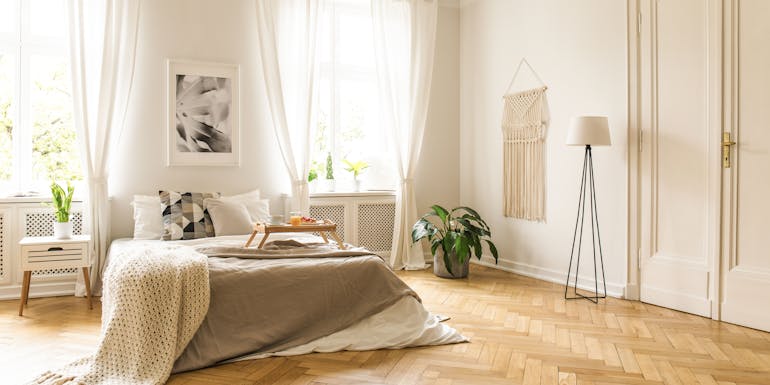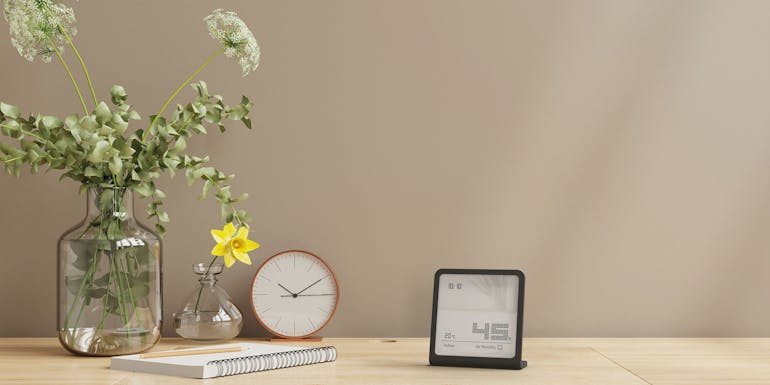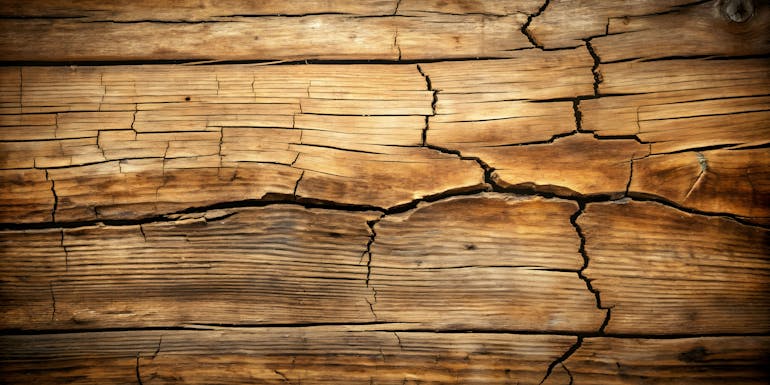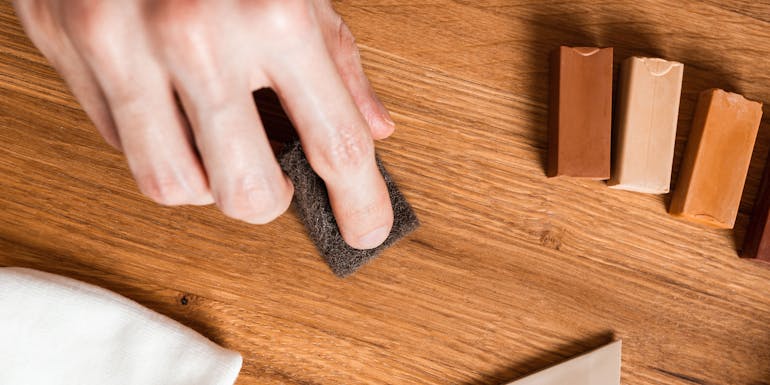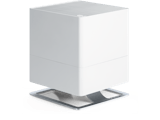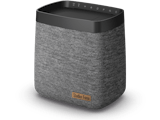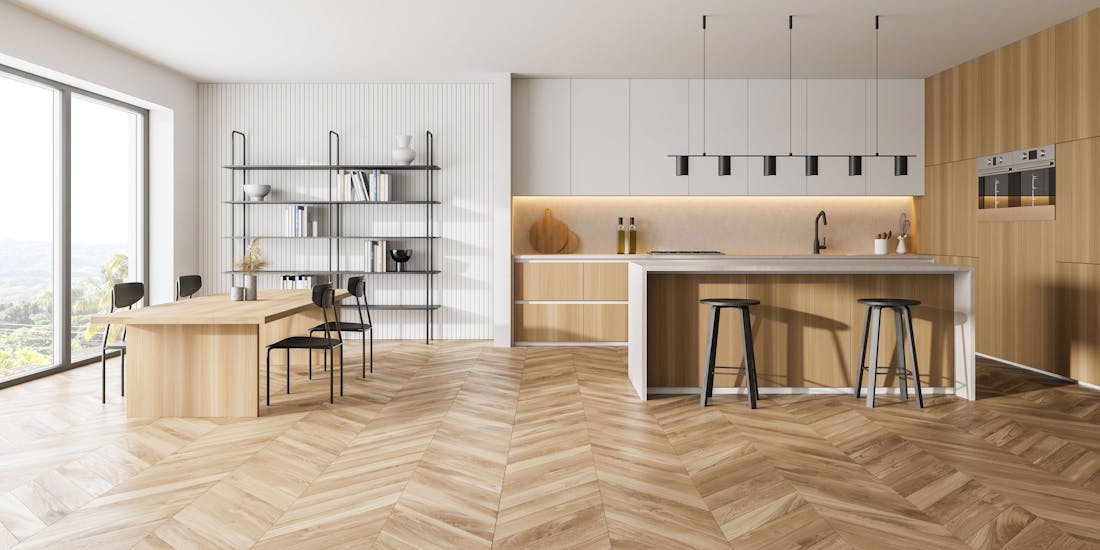
Nadine Walder, 8 October 2024
Living room
Humidity and wooden floors: effects of excessively dry air
Wood is a hygroscopic material that reacts to changes in its environment – especially humidity. If the humidity is too low, this can cause damage to wooden furniture and wooden floors such as parquet. Cracks, warping and shrinkage of the material can be typical consequences when wood loses its moisture. In this article, you will find out how moisture affects the behaviour of wood, why humidity plays an important role and what measures can help to prevent damage.
Read on to find out:
- The nature of wood: wood moisture and its significance
- Ideal humidity for parquet floors and wood equilibrium moisture content
- Effects of dry air on parquet and ohter wood products
- Measures in the event of low humidity
The nature of wood: wood moisture and its significance
Wood moisture refers to the amount of water contained in the wood in relation to the dry mass of the wood. Freshly cut wood usually has a moisture content of over 30 %. During drying and wood processing, the wood loses some of its moisture until it finally reaches an equilibrium moisture content. This depends on the ambient air humidity. This means that the wood adapts to the room temperature and humidity and can become drier or more moist.
Wood is a living substance that absorbs moisture from the air and releases it again in dry conditions. This property is called hygroscopic and explains why wood changes under different humidity conditions. In low humidity environments, the wood releases moisture into the air and shrinks as a result. In humid environments, on the other hand, the wood absorbs moisture and swells. The hygroscopic nature of wood means that it is particularly sensitive to major fluctuations in humidity and to prolonged periods of dryness or dampness.
Ideal humidity for parquet and wood equilibrium moisture content
The ideal humidity in rooms with wooden floors and furniture should be between 40 % and 60 %. Within this range, wood can absorb and release moisture without significant deformation or damage. To measure the humidity in your home, you can use a hygrometer to measure the humidity in your home. This shows you the humidity in relation to the room temperature.
There are guidelines for the use and processing of wood indoors to prevent moisture damage. In Europe, the DIN 68800 (only available in German) is authoritative. This deals with wood preservation in building construction. This standard specifies a maximum wood moisture content of 20 % for dry wood. According to these criteria, only this wood fulfils the installation requirements. Limiting the wood moisture content to a maximum of 20 % prevents the growth of wood-destroying fungi, among other things. Parquet, for example, is usually laid with a wood moisture content of 9 %. This corresponds approximately to a room temperature of 20 to 22 degrees and a humidity of 55 % to 60 %.
In Switzerland, the SIA standards of the Swiss society of engineers and architects are applied. According to the SIA standards SIA 180 for thermal insulation, moisture protection and indoor climate in buildings, SIA 253 and 118/253 for floor coverings made of linoleum, plastic, rubber, cork, textiles and wood as well as SIA 382/1 on ventilation and air conditioning systems, the standard climate is defined as follows: "A room temperature between 15 °C and 30 °C and a relative humidity between 30 % and 70 % is assumed to be the normal room climate in use". In practice this means that at a relative humidity of 30 %, the wood will have an equilibrium moisture content of around 5 % to 6 % and at 70 % relative humidity, an equilibrium moisture content of around 12 % to 13 %. This in turn means that – depending on the seasons – the moisture content of wood can change between approx. 5 % and approx. 13 %. As a result, deformation of wooden floors such as parquet can occur.
These standards provide guidelines to ensure that wooden floors and furniture remain stable and visually appealing in the long term and are not affected by moisture fluctuations. These standards are important to avoid visible damage caused by significant changes in humidity. Strong fluctuations can be caused by nature in the form of the seasons, but also by heating or ventilation and air conditioning systems.
Effects of dry air on parquet and ohter wood products
Humidity is a particular challenge in the cold season and in air-conditioned rooms. In winter, heating often makes the air very dry because cold air flowing in from outside contains very little water vapour. In heated indoor spaces, the cold and already dry air becomes even drier. And even in air-conditioned rooms, the relative humidity is often too low, regardless of the time of year.
If the humidity is too low over a longer period, the wood can dry out. This can lead to various problems. Parquet in particular is very sensitive to fluctuations in humidity.
- Joint formation: The release of moisture leads to shrinkage of the wooden elements. This can lead to visible joints and gaps between the timbers.
- Cracks: When the wood dries out, tension can occur within the wood fibres, which can lead to cracks in the wood.
- Deformations: If drying is uneven, deformations such as cupping can occur, causing the wooden boards to warp or bow.
- Instability: Pieces of furniture that consist of several glued wooden parts can become unstable because the individual parts may warp or shrink to varying degrees.
If the humidity is too low for a long period of time, suitable measures should be taken to prevent the damage mentioned.
Measures in the event of low humidity
There are various measures that have proven effective in counteracting low humidity.
- Use a hygrometer: Before you take any concrete measures, you should measure how high the humidity is in your home. To do this, use hygrometers and place them in different places in each room to see how high your humidity is.
- Controlled heating and ventilation: Heaters should not be run on the highest setting as this dries out the indoor climate considerably. Ventilation dries out the indoor air when the outside air is cold. Nevertheless, ventilation is important to bring fresh air and oxygen indoors and to remove CO2.
- Maintain wood regularly: Wooden floors and furniture should be maintained regularly to protect the wood. Applying maintenance oils or waxes creates a protective layer that prevents the wood from drying out and seals it against moisture loss.
- Use a humidifier: A humidifier helps to increase the humidity indoors and keep it at a constant level. Devices with a hygrostat are particularly efficient, as they regulate the humidity automatically and switch off automatically when the desired target humidity level is reached.
The use of hygrometers, humidifiers, regular wood care and a balanced indoor climate can prevent damage to wooden floors and furniture and extend their lifespan. A stable humidity level and consequently a stable wood equilibrium moisture content are the key to preventing cracks, warping and shrinkage of wood.
Would you like to find out more about how a humidifier can help you feel better or what different humidifier systems are available? You can find more information on our information page about humidifying the air.
More about humidifying the air
If you have questions related to indoor room climate, please get in touch with us. Or subscribe to our newsletter to regularly get informed about current topics regarding indoor climate, experience reports or Stadler Form insights.
